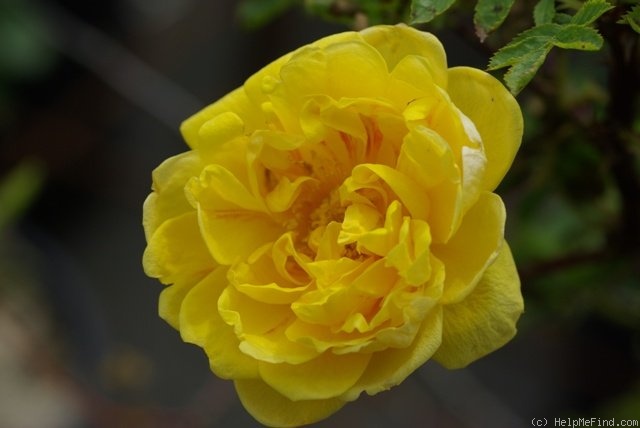|
|
'Persian Yellow' rose Description

Photo courtesy of Bierkreek, kwekerij, de
HMF Ratings:
157 favorite votes.
Average rating:
GOOD-.
Class:
Hybrid Foetida/Lutea, Species / Wild.
Bloom:
Golden-yellow. Occasional carmine-red streaks. Unpleasant fragrance. 40 petals. Average diameter 2.5". Small, semi-double to double, globular bloom form. Once-blooming spring or summer.
Habit:
Armed with thorns / prickles, spreading. Small, semi-glossy, fragrant foliage. 7 leaflets.
Height: 4'11" to 6'7" (150 to 200cm). Width: 4' to 5' (120 to 150cm).
Growing:
USDA zone 3b and warmer. Vigorous. Disease susceptibility: susceptible to blackspot . Do not prune. Resist the urge to prune this rose too heavily -- it doesn't like it!.
Patents:
Patent status unknown (to HelpMeFind).
Notes:
According to Dr. David Zlesak, the rose sold in North America as Persian Yellow is triploid, not tetraploid, suggesting a hybrid origin. The Swedish Rose Society recommends Persian Yellow for northern Sweden.
For clarification of Dates, see References.
Recent DNA studies have shown that 'Persiana' is genetically identical to Rosa foetida, therefore a double-bloomed sport of the latter.
Plants with red petals were apparently discovered in 1994 at Gulmit, Gilgit Baltistan, Pakistan.- See References
|